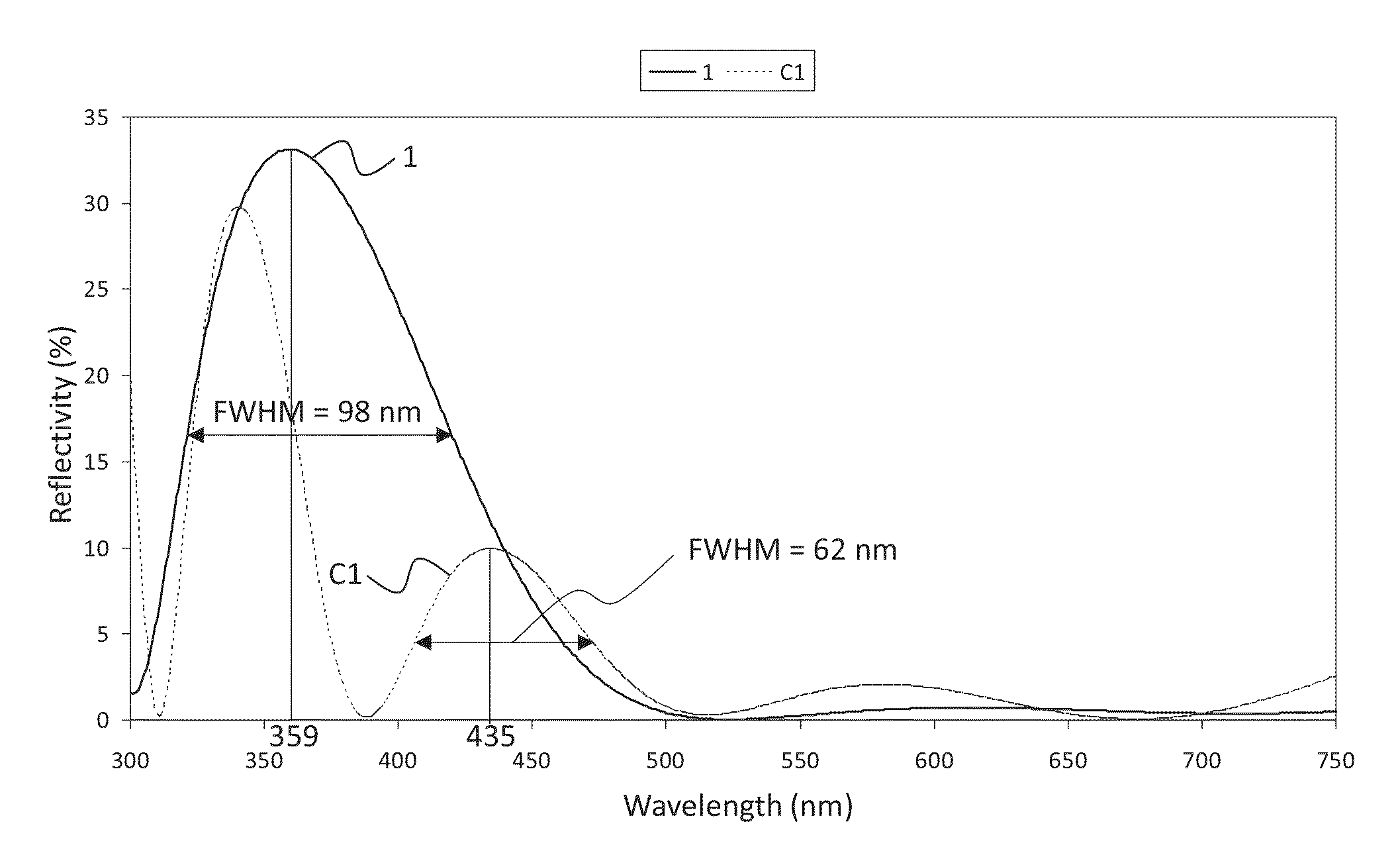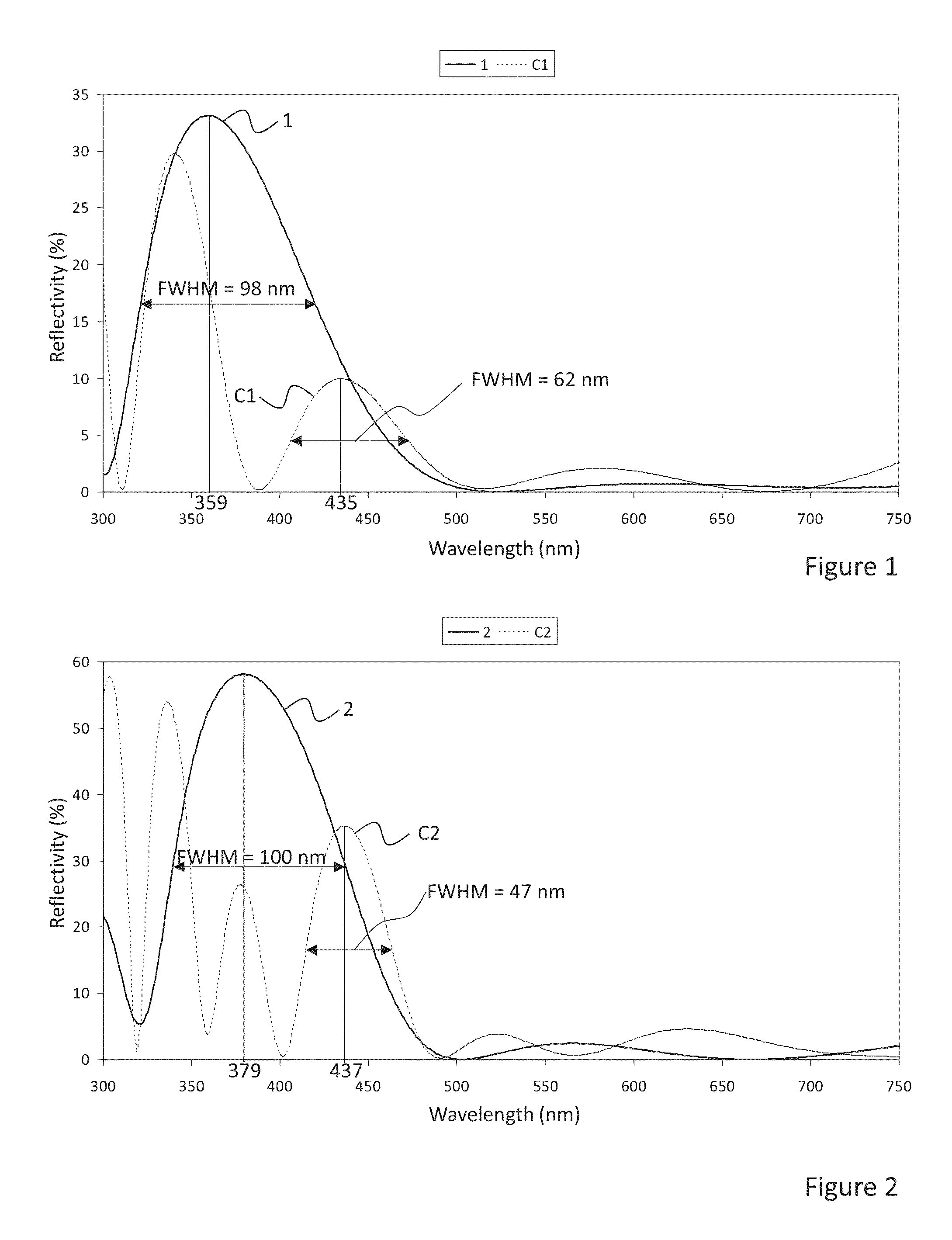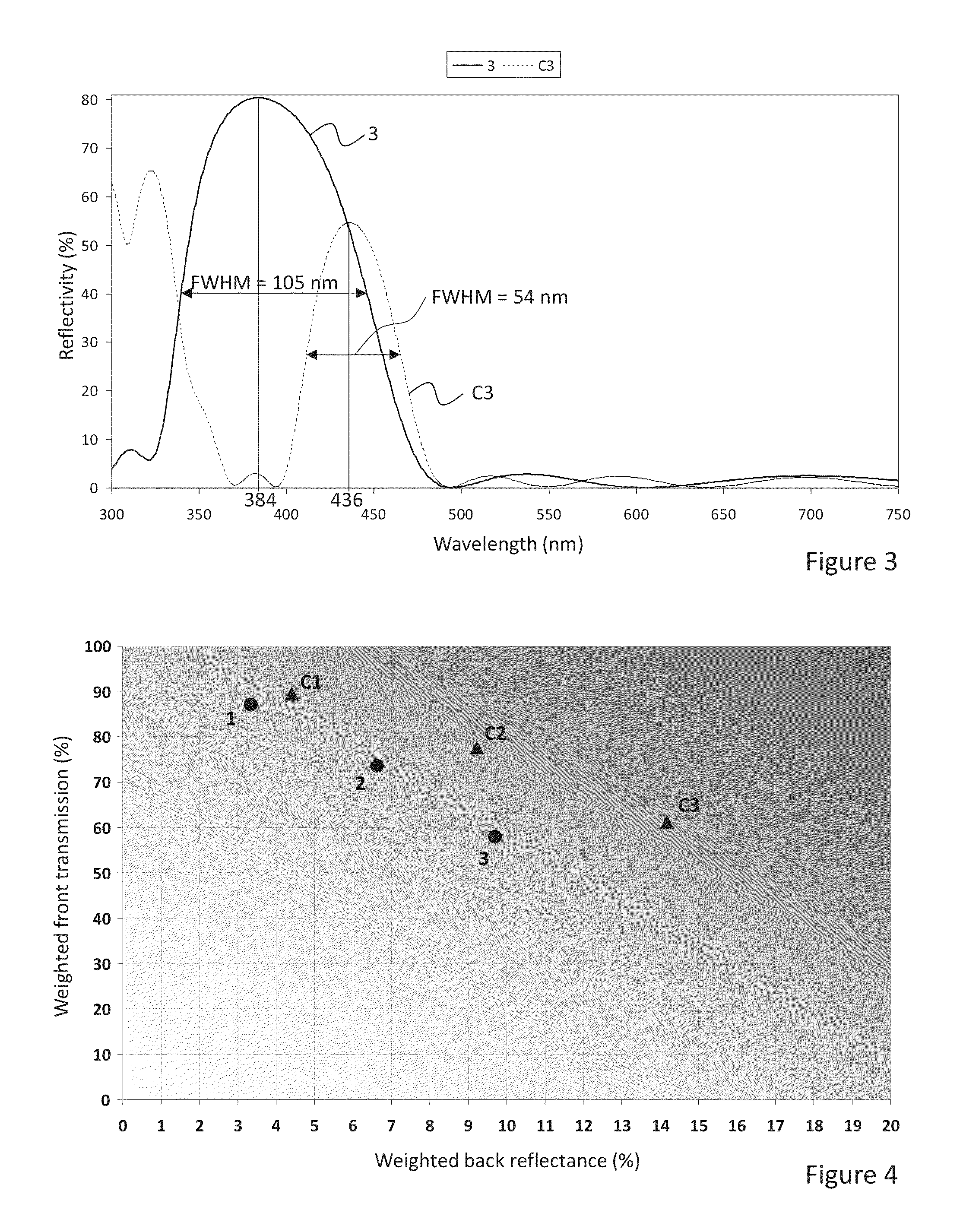Ophthalmic lens
a technology of ophthalmology and lens, applied in the field of ophthalmology, can solve the problems of limiting the performance of spectral selectivity, requiring a long and expensive industrial manufacturing process of filters, and difficult to obtain good mechanical properties, so as to reduce the amount of phototoxic blue light and preserve at best the circadian cycle
- Summary
- Abstract
- Description
- Claims
- Application Information
AI Technical Summary
Benefits of technology
Problems solved by technology
Method used
Image
Examples
examples
[0200]1. General Processes and Procedures
[0201]The filters according to the invention are deposited onto ORMA® lenses coated with an abrasion-resistant coating such as described in the Example 3 of the European patent EP / 614957.
[0202]The evaporating device and the conditions for depositing the SiO2 and ZrO2 layers (evaporation rate, pressure) are such as described in the patent application WO 2008 / 107325.
[0203]2. Calculation of the Curves
[0204]The spectral reflectivity curves of the filters according to the invention have been modelized from the software Essential Mac Leod (version 9.4) of Thin Film Center.
[0205]The characteristics of the filters and their properties are given at point 3 hereunder.
[0206]The ophthalmic lenses fitted with the filters of examples 1 and 2 have been effectively prepared and the spectral reflectivity curves have been measured.
[0207]It has been controlled that the obtained curves did correspond to the modelized curves.
[0208]3. Filter Stacks and Properties....
PUM
| Property | Measurement | Unit |
|---|---|---|
| angle of incidence | aaaaa | aaaaa |
| FWHM | aaaaa | aaaaa |
| blue reflectance factor | aaaaa | aaaaa |
Abstract
Description
Claims
Application Information
 Login to View More
Login to View More - R&D
- Intellectual Property
- Life Sciences
- Materials
- Tech Scout
- Unparalleled Data Quality
- Higher Quality Content
- 60% Fewer Hallucinations
Browse by: Latest US Patents, China's latest patents, Technical Efficacy Thesaurus, Application Domain, Technology Topic, Popular Technical Reports.
© 2025 PatSnap. All rights reserved.Legal|Privacy policy|Modern Slavery Act Transparency Statement|Sitemap|About US| Contact US: help@patsnap.com



